Use Custom Flags for Scheduling, Alerts, and Reporting
When a patient has an unusual scheduling need, or a diagnosis or other issue that requires attention, you can add a patient flag to their record. You can also flag family accounts that need to speak to the billing office and customize report output using flags. Custom status flags help your practice handle unique needs.
Contents
Assign Flags to a Patient or a Family
You can add a flag to a patient or a home or billing account wherever you edit demographics.
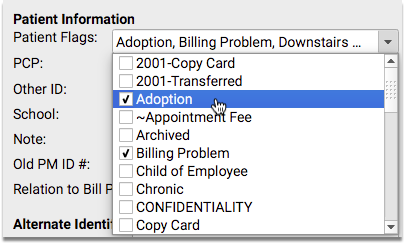
For example, your practice can update flags on the Patient Check-In screen, in the Demographics section of the patient’s chart, or in the Payments tool while you work on a billing issue.
Review Your Practice’s Flags
When you want to review and customize your practice’s flags, open the Tables tool in the Configuration menu.
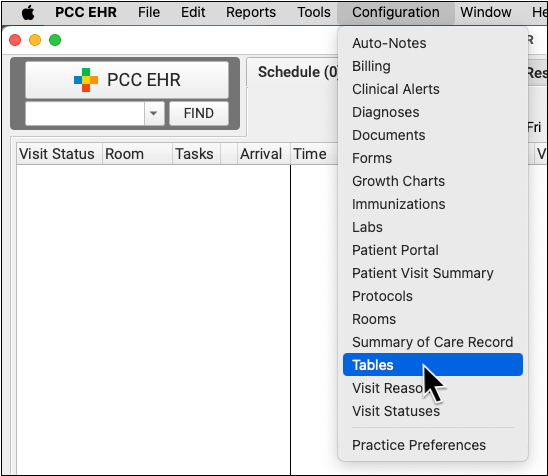
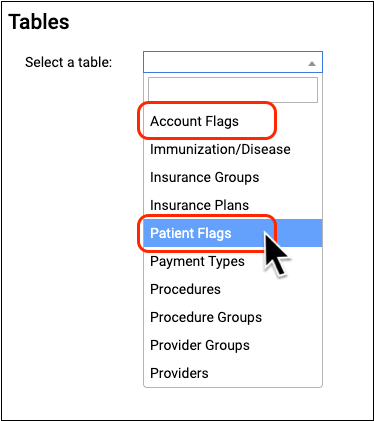
The Tables tool includes Account Flags and Patient Flags tables.
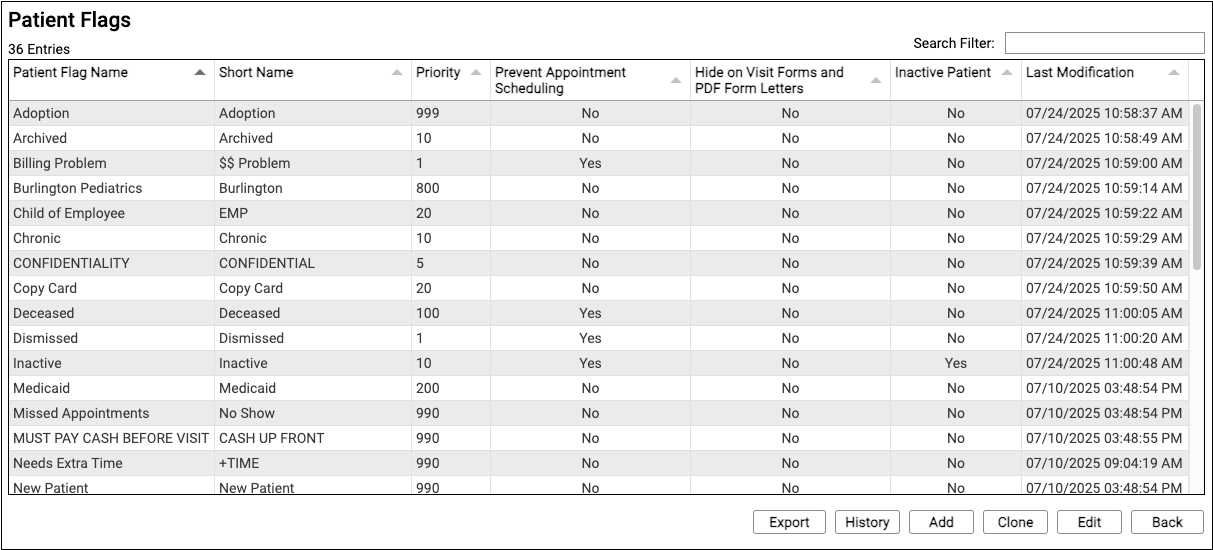
For each flag, you can see the names, sort order priority, and whether or not the flag has certain effects on PCC EHR behavior, such as scheduling, preventing bills from being generated, and more.
Edit or Create a New Flag
Double-click on a flag to edit it, or click “Clone” or “Add” to create a new flag. To learn more about using the Tables tool, read Edit Your Practice’s Configuration Tables.

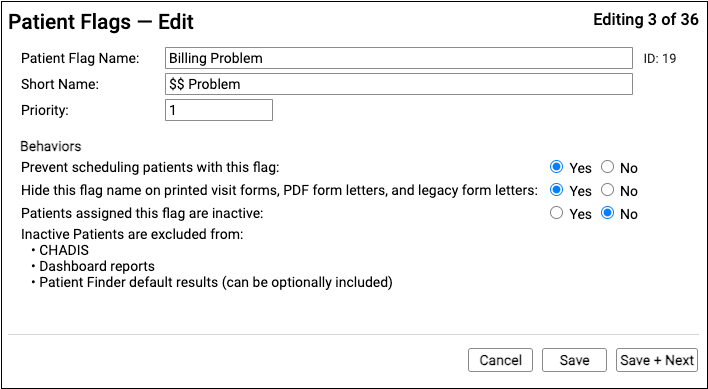
Caution: As with every configuration table, remember that when you make changes you are changing the flag wherever it appears in your system. Do not delete, write over, or change the name of a flag. Instead, clone a flag or create a new one.
When you edit or enter details for a status flag, you can indicate the name and short name that will appear in PCC EHR. The optional priority number controls how the status flag will sort in relation to other flags when displayed on a patient or account record.
In the Behaviors section, you can configure PCC EHR behaviors for patients or families who have the status flag. See the reference below for more details.
Account and Patient Status Flags Behaviors Reference
Status flags have built-in behavior settings controlled by the questions for each flag.
Account Flags Behaviors

Prevent scheduling patients when their home or billing account has this flag
When a user attempts to schedule a patient whose billing or home account has a flag with “Yes – Prevent All Scheduling” selected, PCC EHR’s Appointment Book will display a warning message along with the flag(s) that prevented scheduling. The “Save” button for the appointment will be disabled.
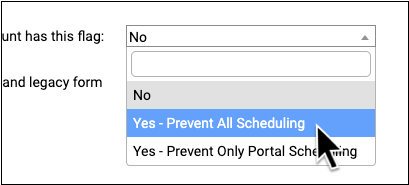
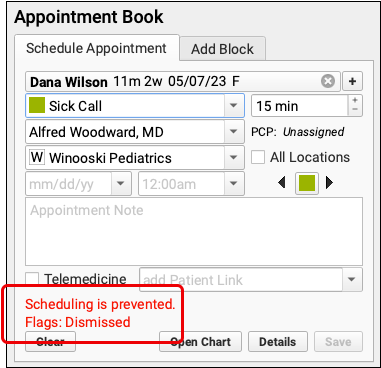
If “Yes – Prevent Only Portal Scheduling” is selected, patients with that flag can be scheduled through the Appointment Book, but not through patient portal self-scheduling. In the patient portal the patient will be unselectable and marked “Please Call to Schedule”.
Hold bills for accounts with this flag
Hide this flag name on printed visit forms, PDF form letters, and legacy form letters
Exclude from the Practice Vitals Dashboard
Patient Flags Behaviors

Prevent scheduling patients with this flag
When a user attempts to schedule a patient who has a flag with “Yes – Prevent All Scheduling” selected, PCC EHR’s Appointment Book will display a warning message along with the flag(s) that prevented scheduling. The “Save” button for the appointment will be disabled.
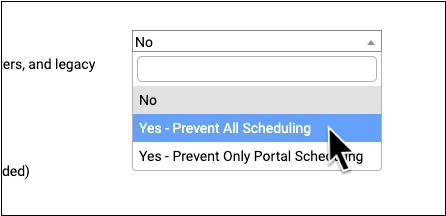

If “Yes – Prevent Only Portal Scheduling” is selected, patients with that flag can be scheduled through the Appointment Book, but not through patient portal self-scheduling. In patient portal the patient will be unselectable and marked “Please Call to Schedule”.
Hide this flag name on printed visit forms, PDF form letters, and legacy form letters
Patients assigned this flag are inactive

Other Ways to Use Status Flags
In addition to the automatic behaviors described above, practices use status flags in the following ways.
Show an Alert
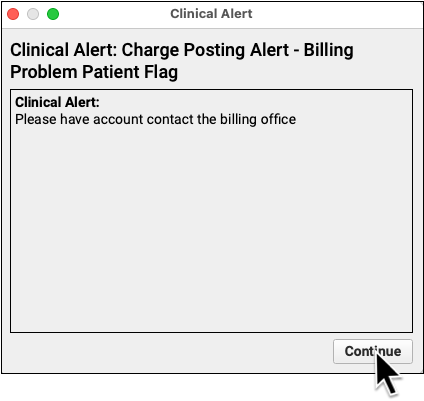
Customize a Report

Control Broadcast Messaging
